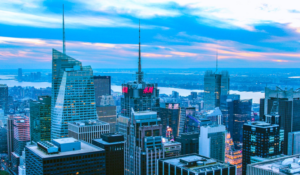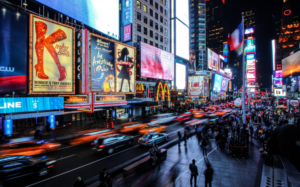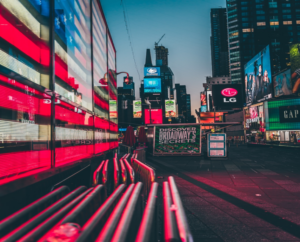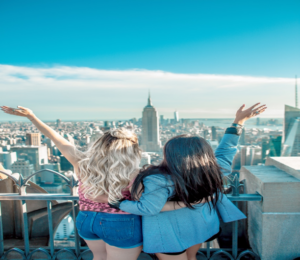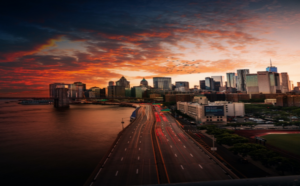
The Decrease of International Travel
New York City is the most popular big city destination in the United States, with 13.5 million international visitors annually. In an effort to control the spread of the coronavirus, New York was forced to ban individuals from China, Brazil and the United Kingdom from entering the state. These three countries contribute heavily to tourism in New York City and the impact of the ban has been immensely felt. In August 2019, 3.5 million international visitors arrived at New York’s Kennedy International Airport, compared to the 400,000 that visited in 2020. The U.S. Travel and Tourism Association predicts that international visitors will decrease by 80% this year, compared to 2019. Last year, 79 million tourists visited the U.S. but that number is forecasted to drop to 18.6 million this year.
Upgrade Your Hotel Technology!
COVID-19 Impact on the NYC Hotel Industry
Employment in the hospitality and leisure industry has been deeply impacted in New York City and 50% of hotels were forced to close. Hotel occupancy levels fell by 80% compared to the prior year. According to the Department of Labor, there has been a 48% decrease in employment in the Industry since the COVID-19 pandemic began. Out of the 252,000 jobs that were lost, only a little over 89,000 have been recovered. And there are still 174,000 New Yorkers in the Industry who are still unemployed since the global crisis began. Prior to the COVID-19 crisis, hotels in New York City generated more than $3 billion in city taxes and $450 million in state taxes. In June of 2020, the state began requiring that all visitors be quarantined for 14 days upon arrival, in addition to the cancellation of public events and travel restrictions, the effects have been staggering. More than 25,000 hotel employees have been out of work for more than six months and most in the hotel business have been struggling to stay afloat.
COVID-19 Impact on New York City Events
COVID-19 caused a global crisis that resulted in restrictions and cancellations of many legendary events that would normally take place in New York. Broadway shows contribute $15 billion to the City’s economy and supports almost 100,000 workers. Events like the Tony awards, that is usually scheduled during the summer is now being held virtually, along with the New Year’s Eve ball drop. The NYC Marathon has been cancelled and the NYC Ballet has been closed since the pandemic began. This year the U.S. open was held without any fans being allowed in the arenas. These events would normally attract millions of visitors annually but have been drastically altered due to the COVID-19 pandemic. Visitors would typically gravitate towards New York City for these events and the tourism industry would normally be booming, but this year many hotels and other businesses remain empty.
COVID-19 Impact on Spending
According to the U.S. Travel Association, 25% fewer Americans will be traveling for the holiday this year and 28% plan to decrease their spending due to the economic impact of COVID-19. Travel spending for the first two weeks of October has dropped by 43% and has resulted in a $9.5 billion loss compared to last year. The U.S. travel economy has suffered $424 billion in losses since the COVID-19 pandemic began and travel spending is expected to decrease by $41 billion for the month of October. New York City has experienced losses exceeding 50% in weekly travel spending since March of 2020 and the lack of travel has continued to have an adverse effect. 403 thousand jobs have been supported by tourism in the U.S. and many businesses will continue to be affected until travel restrictions have been lifted and people feel it is safe to travel again.
Times Square is Quiet
Times Square is legendary and is known for its bright lights and is one of the most highly trafficked areas in the City. Times Square normally contributes $2.5 billion in tax revenue and employs 180,000 workers. But with a lack of tourism, 26 out of the 46 hotels in the area have been forced to close. The decline in visitors have also resulted in 90 of the 162 restaurants closing. The businesses in Times Square rely heavily on tourism, but shops, restaurants and hotels have remained empty since the COVID-19 pandemic began. Pedestrians no longer clammer the sidewalks and foot traffic has fallen by 90% since the pandemic began. New York’s famed China Town is usually packed with tourists and locals, but has seen a drastic decline in business with no tourists to buy souvenirs or to dine in the restaurants.
The Slow Road to Recovery
New Yorkers are now helping to keep businesses open by dining out in predominantly tourist areas. Many local residents are also taking advantage of lower hotel rates and are booking hotels for their business and leisure stays. The COVID-19 hotel impact has been devastating, and many COVID-19 hotel initiatives were created in order to provide additional revenue for hotels. Hotels began housing medical professionals, COVID-19 patients and have been leasing rooms to the City to house the homeless population who are most at risk of contracting COVID-19. In September restaurants in the City began serving patrons at reduced capacity and most residents are slowly beginning to venture out. The road to recovery will be a slow one, but New York is a city that is known for overcoming a multitude of challenges.

